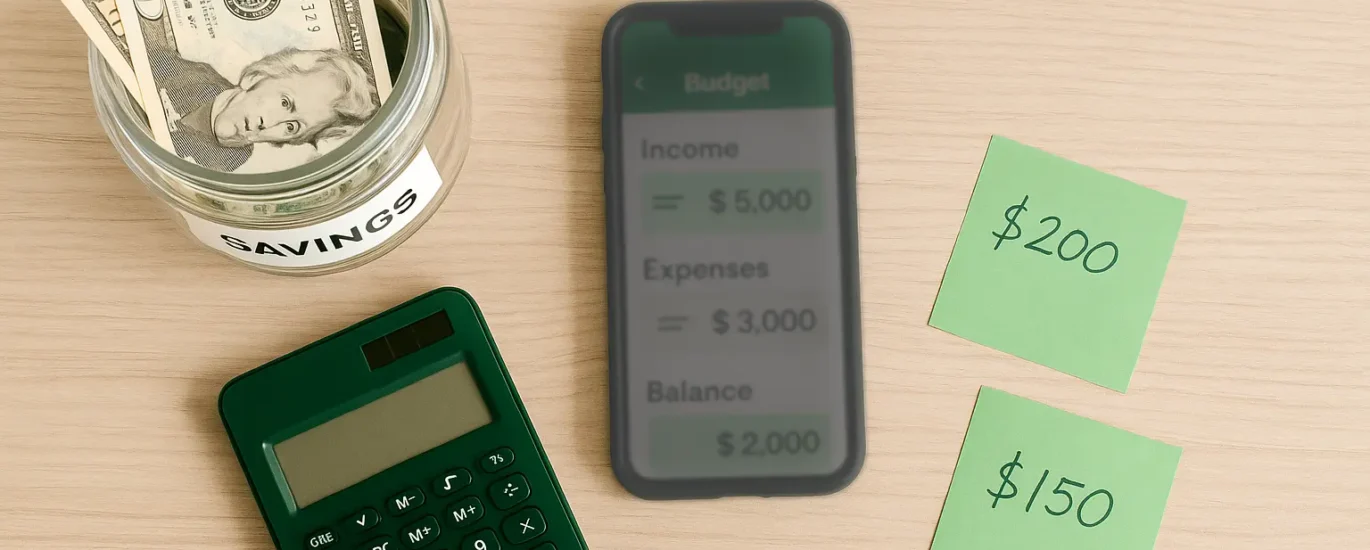Whether you’re living paycheck to paycheck or just trying to boost your savings, Understanding how to save money is among the wisest financial choices you can make. Saving doesn’t have to mean depriving yourself—it’s about being intentional with every dollar you spend. In this guide, we’ll break down simple, realistic strategies you can start using today.
1. Build a Monthly Budget (with a 50/30/20 Twist)
Understanding your spending habits is important for saving money. You can be spending over what you need to without noticing it if you fail to keep a tab on your income and your expenses.
Start by creating a sample personal budget—a clear breakdown of your monthly income, fixed costs, flexible spending, and savings goals. A popular method is the 50/30/20 budget plan:
- 50% to needs (rent, groceries, bills)
- 30% to wants (dining out, subscriptions)
- 20% to savings and debt repayment
✅ Pro Tip: Use free apps like Mint or Notion templates to automate your budget tracking.
2. Stop Paying Credit Card Debt and Stop Worrying About It
If you have credit card debt, chances are you’re facing interest rates of 30% or higher, which can escalate rapidly. This isn’t just a financial strain; it also takes an emotional toll.
Here’s how to tackle it head-on:
- Prioritize the card with the greatest interest rate (Avalanche technique of debt)
- To avoid fees for paying late, establish automatic minimum payments.
- Redirect any windfalls (like bonuses or gifts) toward the balance
And remember—you’re not alone. Debt is a common challenge, but with consistency, you can stop paying credit card debt and stop worrying about it altogether.
3. Understand What Are Credit Card Cash Advances (and Avoid Them!)
Before using your credit card like an ATM, know this: credit card cash advances are one of the most expensive ways to access cash.
Here’s why they’re dangerous:
- High fees (typically 3-5% per withdrawal)
- No grace period—interest starts immediately
- Higher interest rates than regular purchases
💡 Pro Tip: If you need quick cash, consider interest-free loan apps or borrowing from friends/family with a repayment plan—not your credit card.
4. Master the Difference Between Savings and Checking Accounts
Many people use their checking account for everything—but this could be sabotaging your savings goals.
Let’s examine the distinction between a checking account and a savings account:
| Characteristics | Checking Account | Savings Account |
|---|---|---|
| Purpose | Day-to-day transactions | Storing money for future |
| Interest | Usually none or low | Higher interest |
| Access | Debit card, ATM, online transfers | Limited withdrawals/month |
| Best For | Bills, shopping, everyday spending | Emergency fund, goal-based savings |
✅ Money tip: Automatically transfer a fixed amount to your savings account right after payday—it’s a way of paying yourself first.
5. Take Advantage of Balance Transfers
Still stuck paying off multiple credit cards? You might ask: how do balance transfers work?
Here’s the deal:
- You move debt from a high-interest card to a new card offering 0% intro APR (for 6–18 months)
- Pay off the transferred balance during this window to avoid interest
- Often comes with a one-time transfer fee (around 3%)
⚠️ Caution: Balance transfers are a tool, not a solution. They work best when paired with a strict repayment plan.
6. Know How Long to Keep Bank Statements & Financial Records
Decluttering your finances? Great! But don’t toss everything too soon.
Here’s a quick cheat sheet on how long to keep bank statements:
- Bank statements: One year (or more if it’s for taxes)
- Tax documents: 3–7 years
- Loan documents: Until fully paid off
- Receipts for large purchases: As long as you own the item
🗂️ Tip: Store everything digitally using Google Drive or Dropbox, labelled by year and category.
Conclusion: Start Small, Win Big
Learning how to save money isn’t about being perfect—it’s about progress. Start with one habit today: build a simple budget, automate a tiny savings transfer, or cancel one unused subscription.
Here’s your action plan:
- Download your bank statements and build a sample personal budget
- If you’re dealing with debt, cease making payments on your credit card debt and let go of the stress—begin with small, automated payments.
- Learn what credit card cash advances really cost, and avoid them
- Open a savings account and transfer money from your checking account every payday
- Consider a balance transfer if your credit card interest is out of control
- Organize and digitize your bank statements and financial data.
By consistently applying these strategies, you’ll not only save money—you’ll gain peace of mind.
We’ve created a simple 30-Day Savings Tracker +challenge you can use to start small and stay motivated—no apps needed!






